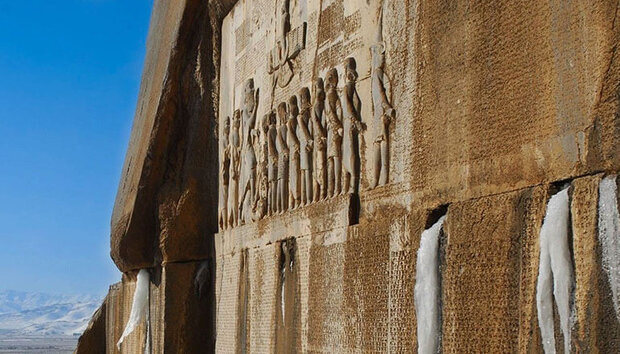Private sector to invest $2.5m in UNESCO-registered Bisotun

TEHRAN – The private sector is planning to invest one trillion rials ($2.5 million) in the UNESCO-registered Bisotun, which embraces giant bas-reliefs and inscriptions of Darius the Great, in the western province of Kermanshah, the provincial tourism chief has said.
The amount of investment is expected to be spent on the development of the tourism infrastructure within the World Heritage site in the near future, IRNA quoted Mohammadreza Soheili as saying on Monday.
Currently, around 250,000 tourists visit this World Heritage site every year, and this number is expected to triple if the investment is made in the creation of new facilities and developing infrastructure, the official added.
Situated some 30 kilometers from Kermanshah, at the foot of the Zagros Mountains, Bisotun was inscribed on UNESCO’s World Heritage list on July 13, 2006.
The principal monument of this archaeological site is a massive bas-relief and cuneiform inscription ordered by Darius the Great shortly after he ascended to the throne of the Persian Empire in 521 BC.
The bas-relief portrays Darius holding a bow, as a sign of sovereignty and treading on the chest of a figure who lies on his back before the Achaemenid king. According to legend, the figure represents Gaumata, the Median Magus, and pretender to the throne, whose assassination led to Darius’s rise to power.
Below and around the bas-reliefs, there are about 1,200 lines of inscriptions telling the story of the battles Darius waged in 521-520 BC against the governors who attempted to take apart the empire founded by Cyrus.

The inscription is written in three languages. The oldest is an Elamite text referring to legends describing the king and the rebellions. This is followed by a Babylonian version of similar legends. The last phase of the inscription is particularly important, as it is here that Darius introduced the Old Persian version of his res gestae (things done).
This is the only known monumental text of the Achaemenids to document the re-establishment of the empire by Darius I. It also bears witness to the interchange of influences in the development of monumental art and writing in the region of the Persian Empire. There are also remains from the Median period (8th to 7th centuries BC) as well as from the Achaemenid (6th to 4th centuries BC) and post-Achaemenid periods.
According to the UN cultural body, Bisotun bears outstanding testimony to the important interchange of human values in the development of monumental art and writing, reflecting ancient traditions in monumental bas-reliefs.
The area was on the ancient trade route linking the Iranian high plateau with Mesopotamia and contains remains from prehistoric times to the Median and Achaemenid eras.
ABU/AM
